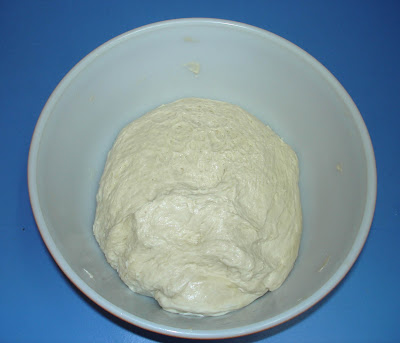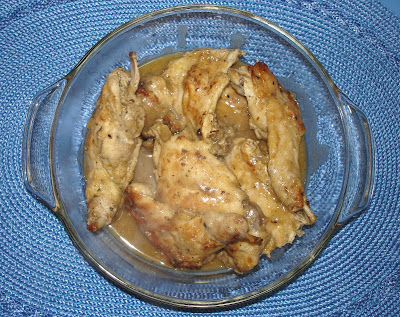Well I've tried to make ciabatta for the first time. Quite something. The whole process of retarding fermentation means that it can 2 to 4 or 5 days to complete the process of making this type of "rustic" bread.
I started the day before yesterday to make stage one: the "
biga". I ended up using an adaptation of a recipe from Crust to Crumb which Peter Reinhart calls a Universal Rustic Loaf, with some shortened steps using suggestions from Lauren Chattman's version of Ciabatta, from her Bread Making book
My version of the recipe follows.
Rustic Ciabatta
Biga Style Pre-Ferment:
16 oz unbleached bread flour
1 1/4 cups cool water
1 tsp instant yeast
Combine all ingredients in mixing bowl, and stir until mixed. Kneed for 5 minutes and dough is smooth and tacky. Cover bowl with plastic and let stand for 3 to 5 hours, or till doubled.
Punch down and cover and refrigerate overnight. Freeze any
biga not used in recipe
Rustic Ciabatta:
16 oz
biga
16 oz unbleached bread flour
1 tbs sugar
1 1/2 tsp salt
1/2 cup milk at room temperature
2 tbs olive oil
1 cup cool water
Take out
biga an hour before using. Measure amout needed. Freeze balance for another time.
Measure and combine all other ingredients in bowl of stand mixer. Cut up
biga into small pieces and add to mixer. Use paddle attachment and mix slowly till everything is combined. Put in dough hook and mix for 8 minutes till dough is very sticky.
I had to add a bit more water to achieve this consistency.
Cover bowl and let sit for 3 to 4 hours till about 1 1/2 times. Scrape dough onto heavily floured counter. Divide into 2 or 3 pieces and loosely shape into rectangles.
I was not planning to bake all of that day, so I put one ball of dough back into a bowl, covered it and put it back into the refrigerator overnight.
With heavily floured hands transfer dough to parchment covered pan and stretch dough to make a long flatish
loaf shape. Dimple top with fingers and dust with flour and cover with plastic Le t stand till dough is bubbly on surface.
Preheat oven to 475 degrees. Put pan on bottom shelf of oven and add boiling water to create steam
Put pans in oven and bake for 25 to 30 minutes. Spray oven with water to start and after 10 minutes.
Loaves should be golden brown when done. Cool on wire racks. Interior crumb should be open and airy.
I am very pleased with the results! Lovely taste and texture.






























